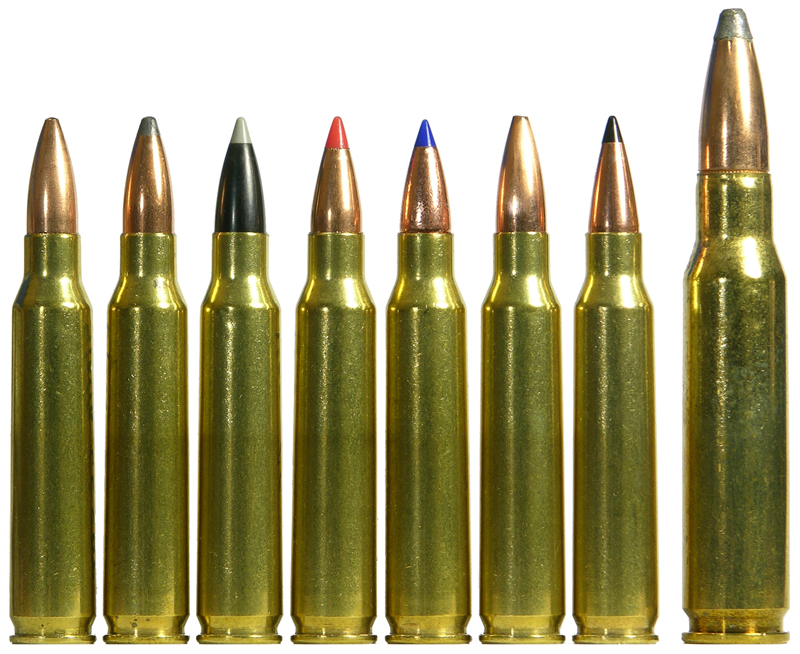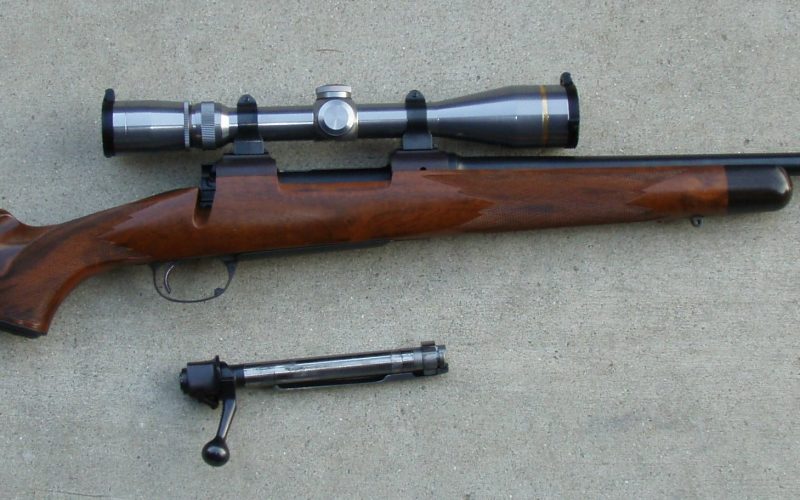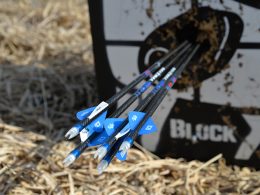The .270 and .243 Winchester cartridges are two of the most popular and versatile rifle rounds available today. While neither cartridge is anywhere close to new, both have been flattening critters for years and are loved by hunters worldwide. So, is one better than the other? Let us take a look.
Table of Contents
The .270 Winchester
Conceived in 1923 and brought to market in 1925, Winchester designed the .270 as a versatile medium and large game cartridge and first chambered in the then-new Model 54 bolt action rifle. The model 54 was the predecessor to the model 70 and set up to use iron sights like a Williams or Lyman aperture (peep) sight rather than a scope.
At first, the .270 did not make waves. Gun writers of the day largely ignored it since surplus .30-06 rifles were affordable, and the ammunition for them was available in multiple bullet weights, whereas the .270 initially had only had one bullet weight available.
The .270 Winchester might have languished as a mediocre seller if it had not caught the attention of noted writers Monroe Goode and Townsend Whelen, who praised it for light recoil and flat trajectory. After these men came Jack O’Conner, who would become the shooting columnist of Outdoor Life in 1939. Mr. O’Conner was a devoted fan of the .270, killing over 36 different species with the cartridge. He praised the round as the sheep rifle and later used it to harvest game as large as moose and grizzly bears.

Initially loaded with a 130-grain bullet leaving the muzzle at over 3100 feet-per-second, the .270 developed a reputation as needing very little hold-over at 300-500 yards when sighted in at 250. As this flat shooting reputation grew, more hunters began to adopt the cartridge. Because of the light bullet, many considered it a deer, sheep, or antelope round, unsuited to use on large game like moose, elk, and bears. Eventually, intrepid souls began to try the .270 on big animals and found that it did the job well with little fan fair.
Some hunters complained about meat damage, leading ammunition manufacturers to release a 150-grain load at 2770 feet per second. This made for a great woods round, but customers believed that the extra bullet weight cost them the flat shooting aspect of the cartridge. Manufacturers then downloaded the 130-grain load to 2770 feet per second to satisfy everyone. This reduction in velocity no doubt saved some meat but took away from the killing power of the cartridge past 300 yards.
Modern factory loadings have returned the .270 Winchester to some of its former glory, with Remington and Winchester listing their 130-grain soft point loads at 3060 feet per second at the muzzle. Hornady lists its loads at 3060 fps for the 130-grain American Whitetail loading and 3190 fps from the Superformance line. Hornady used a 24” barrel for its velocity testing. Many rifles wear a 22 inch tube, reducing the speed by 100-200 fps at the muzzle. This loss in velocity will increase bullet drop by about 2 inches at 400 yards.
The .270 also makes a decent varmint round. Most companies offer a 100-grain loading that leaves the muzzle at over 3300 feet per second, turning the cartridge into a long-distance coyote and groundhog neutralizer. Handloaders can really leverage this capability with bullets available in weights down to 85 grains.

As we have seen with the adventures of Mr. O’Conner, the .270 is a very versatile round, capable of taking any game in North America. And, until the advent of the 6.5 Creedmore, it was probably the second most popular hunting rifle cartridge in the US.
While the .270 is a fine deer and varmint rifle, its popularity in this category has long been challenged (especially in the south and west) by one of its younger stablemates, the .243 Winchester.
The .243 Winchester
One of what Jack O’Conner referred to as the Post-war Mild Cartridges in his book The Hunting Rifle, the .243 Winchester was created by necking down the then-new .308 Winchester round to take a 6mm bullet. Conceived and designed as a multi-role cartridge, the .243 will handle projectiles ranging from 55 to 115 grains. I have talked to many hunters who use the .243 Winchester, and they consider it a near-perfect round because it kills game quickly and cleanly, with little recoil.
Debuting in 1955, the .243 was an instant success. Its chief competitor, the .244 Remington (later renamed the 6mm Remington), was not. What gave the .243 Winchester a decided advantage from the start was its versatility. While Remington designed the .244 as primarily a varmint rifle with a slow twist barrel for light bullets, the .243’s 1 in 10 rifling twist could handle projectiles ranging from 55 grains up through 117 grains, enabling it to be both a varmint rifle and a deer rifle and to do both well.
A caveat to the .243s stellar performance is that for large game like elk or moose, it is not ideal, though it has performed ably on these animals in the hands of a cool shot using the right bullets. The lack of bullet mass to aid penetration makes using a well-constructed bullet a must. The second factor at play is the impact velocity of the projectile. Lighter bullets require more speed in order to be driven deep enough to cause the wounding necessary for swift kills on big animals. Inversely, lighter bullets tend to be lightly constructed and can expend all of their energy and mass before any meaningful penetration happens.

For the reasons given above, those who use the .243 Winchester on big game need to be very discerning in their choice of projectiles. One projectile that my source recommends is the Barnes TSX. This monolithic solid copper bullet holds together very well, and has shown itself to be one of the deepest penetrating 6mm projectiles, capable of reaching the vital organs of a deer in a tail-on shot.
Other recommended offerings are the 85-grain Sierra Gameking hollow point, the 105-grain Speer Hot Cor, and the 95-grain Hornady SST. The Gameking and the Hot Cor are consistent performers with controlled expansion and leaving a good wound channel. The SST is a violent on soft tissue, but penetration is limited after breaking bone, precluding tail-on shots. The Hot Cor was, in years past, the preferred choice for taking larger animals with a .243. Speer constructs the Hot Cor bullet by pouring the molten lead into the copper cup, rather than being swagging it in. The molten lead bonds with the copper jacket, nearly fusing the two and preventing core–jacket separation. Most of these bullets are available in comercial loadings, while others are reloading components.
For factory ammunition, the standard 100-grain soft-point offered by most manufacturers perform well at woods hunting distances, particularly at less than fifty to seventy-five yards where the impact velocity is high. The softer Hornady 100-grain Interlock is an exception to this, providing good expansion out past 200 yards.
The largest deciding factor in the performance of .243 Winchester ammunition is velocity. Based on field research from Terminal Ballistics Research in New Zeeland, bullets from the .243 need to impact game at above 2650 feet per second in order to impart the necessary shock for a swift kill. Most factory offerings for the .243 Winchester leave the muzzle around 2850 feet per second, with velocity dropping below 2650 fps around the two-hundred-yard mark.
So, the .243 Winchester is no slouch, doing well on game from woodchucks to white-tailed deer. It lacks some of the flash, sizzle, and recoil) of its bigger brothers, but that is why most shooters like it. It is definitely not the underpowered youth gun that many older hunters from my younger years considered it to be.
Conclusion
So, in this battle of .270 versus .243, which is the better round? I would say it depends on what you want to kill and how far away it is. The .243 excels at taking deer-sized and smaller game at under 300 yards (though it can be pushed quite a bit farther on varmints). If most of your shooting is at coyotes with the occasional deer, then the .243 is your buddy. However, if you are a big game hunter who takes a shot at the occasional groundhog or coyote, then the .270 is your best friend. It has more recoil and burns more powder than the .243, but it can reach to 500 yards on deer-sized with the right loading.
Put another way, if both rounds are loaded with a 100-grain bullet, the .270 leaves the muzzle 550 feet per second faster than the .243. Even with a heavier bullet weight like the 140 soft points in Hornady’s American Whitetail loading, the .270 still leaves the muzzle at the same speed as the 100-grain .243, and is still carrying 1300 foot-pounds of energy at 500 yards. Simply put, the .270 has more horsepower at longer ranges than the .243.
If your shots are all under 200 yards in the woods, then this may be a pointless discussion. However, when the terrain gets a bit more open, knowing your rifle’s capabilities (and limitations) can make all the difference when you have the opportunity for that once-in-a-lifetime hunt or have a shot at the buck of your life.









